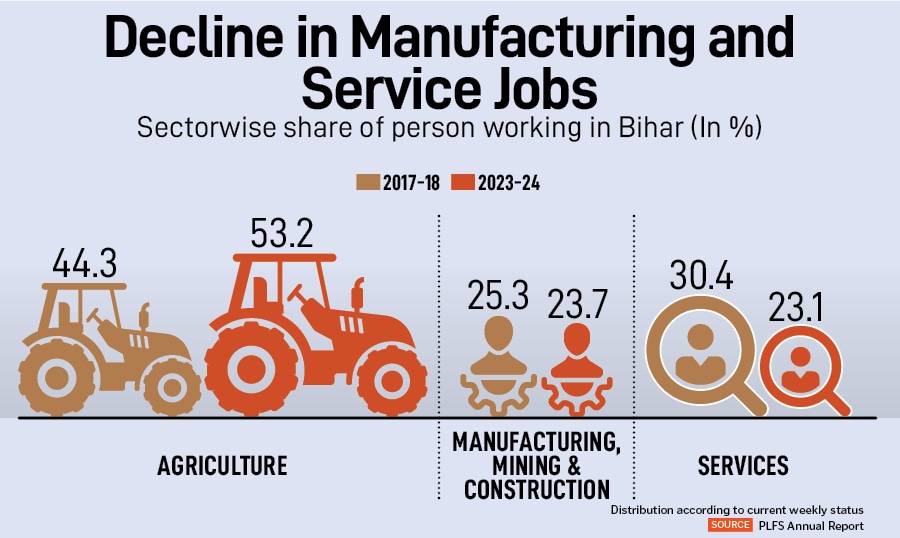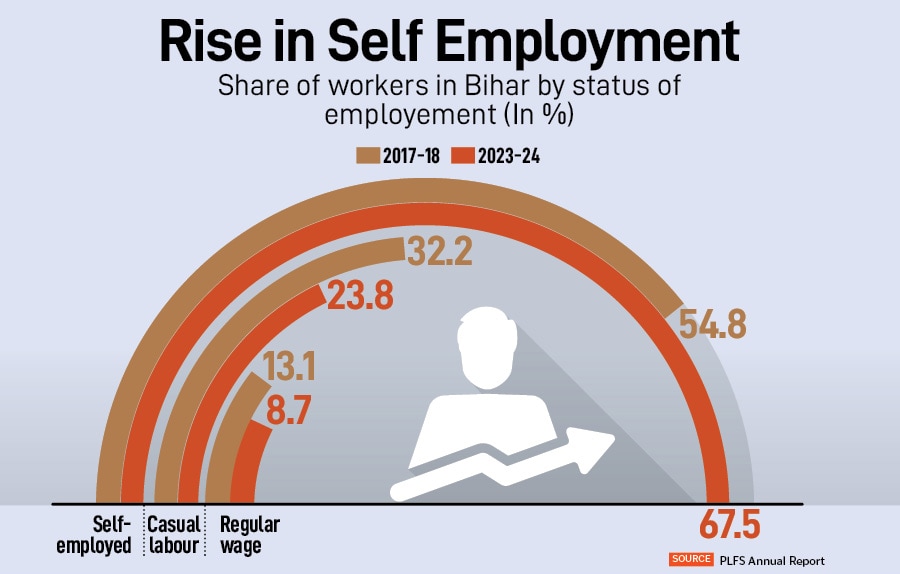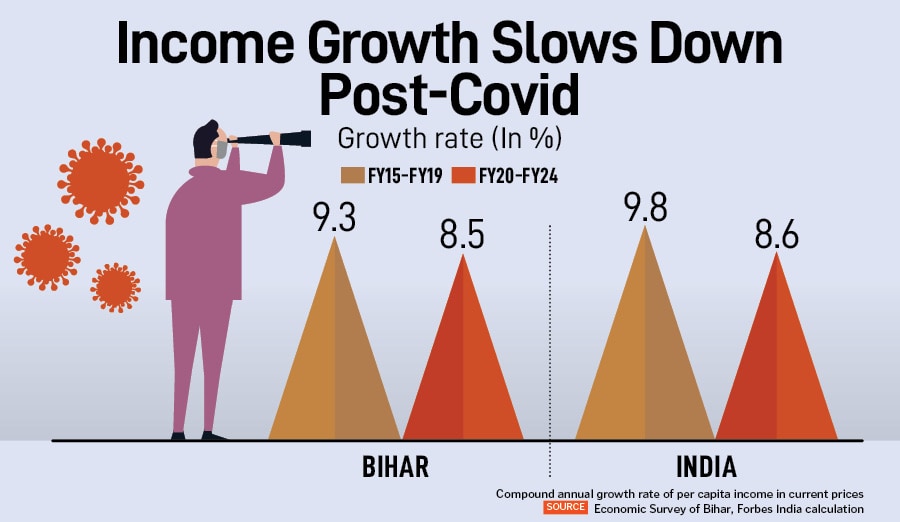Bihar Elections 2025: State’s growth is failing to create mass non-farm jobs
A shortfall in formal employment has been absorbed by agriculture whose share of the working population has increased


As Bihar prepares for its high-stakes assembly elections this week, the state’s economic data reveals a persisting jobs crisis coupled with extreme regional inequality; a structural fault line defining the political contest in the state.
While the capital city Patna remains an isolated high-income hub, the shift of workforce back to agriculture across the rest of the state suggests that employment is distress driven and growth is not inclusive.
There is a significant occupational shift in Bihar’s workforce. Between 2017-18 and 2023-24, the state witnessed a workforce shift from non-farm jobs. The share of persons working in the crucial services sector plummeted from 30.4 percent to 23.1 percent, while manufacturing also dipped. This massive dip has been absorbed almost entirely by the agriculture sector, whose share of the working population increased from 44.3 percent to a staggering 53.2 percent in the same period; a possible sign of underemployment and livelihood distress.

Despite a rise in the agricultural workforce, the sector’s contribution to the state’s economic output remained low in FY24, generating just about a fifth of the total; a ratio unchanged since FY20. Manufacturing and construction contributed a similar 20 percent. Meanwhile, the services sector, despite a significant drop in its workforce, generated the remaining 60 percent of the state’s economic output.
In fact, the manufacturing sector presents a structural paradox; the number of registered factories fell from 3,461 in FY18 to 3,307 in FY23, but the total number of persons engaged rose by nearly 14,000, climbing from 1.21 lakh to 1.35 lakh in the same period, shows data from the Annual Survey of Industries.
Overall, just about 9 percent of the population of Bihar was in regular employment in 2023-24, a notable drop from 13 percent in 2017-18. While employment in casual labour dropped significantly during the same period, there was a corresponding increase in self-employment, with approximately seven out of 10 workers being self-employed in 2023-24, particularly those working as household enterprise helpers.

These changes in Bihar’s workforce pattern are intensified by deeper economic polarisation.
Government data on income shows that among the 38 districts in the state, Patna had the highest per capita income of Rs1.21 lakh in FY23. However, this figure was about 2 percent lower than the income levels in the district in FY19.
In contrast, the next highest-income districts, like Begusarai and Munger, are far behind, and a cluster of 11 districts remain in the ‘lower’ income category, with Sheohar registering a per capita income of just Rs19,561. About 15 districts are in the ‘middle’ income category. This vast gap between the capital city and the rest of the state suggests development and prosperity in the state does not extend beyond a few pockets, leaving most of the electorate struggling.

For this analysis, districts with a per capita income up to Rs25,000 were considered ‘lower’; between Rs25,000 and Rs30,000 were considered ‘middle’; between Rs30,000 and Rs35,000 were ‘upper middle’; and above Rs35,000 were ‘upper’ income districts.
Overall, Bihar's per capita income has risen from Rs48,263 in FY20 to Rs66,828 in FY24. However, it still trails the overall national figure, which currently exceeds Rs2 lakh.
However, the state’s growth rate for per capita income has slowed from 9.3 percent in the pre-pandemic era (FY15-FY19) to 8.5 percent post-pandemic (FY20-FY24). This rate lags behind the national average despite growing at a lower base.

The political opposition and the ruling alliances have recognised this economic anxiety and promised massive job guarantees in their election manifestoes.
While the INDIA alliance is campaigning on state-guaranteed government job for one member of every family, the NDA has promised one crore jobs through skill development and industrial investment.
First Published: Nov 03, 2025, 15:02
Subscribe Now